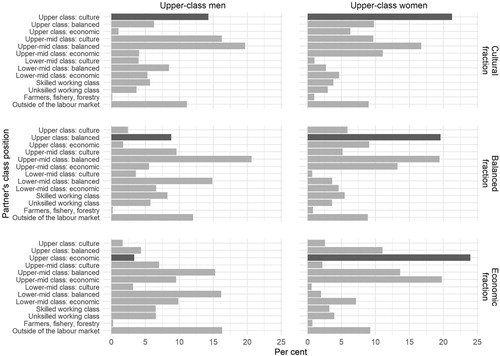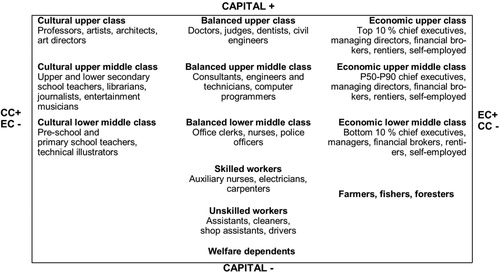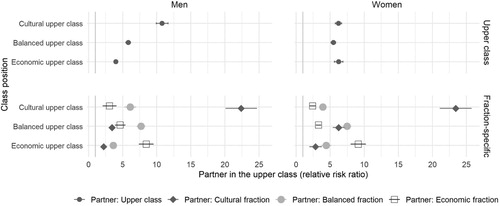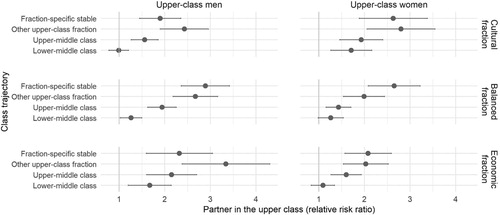Figures & data
Table 1. Descriptive statistics for upper-class subpopulation.
Figure 3. Distribution of upper-class partner’s horizontal class position, by gender and upper-class fraction. Fraction-specific homogamy marked in dark grey.

Figure 4. Odds ratios for having a partner in the upper class, by gender and vertical class position. 95% confidence intervals.

Figure 5. Odds ratios for having a partner in the upper class, by gender and class trajectory of upper-class subpopulation. 95% confidence intervals.





